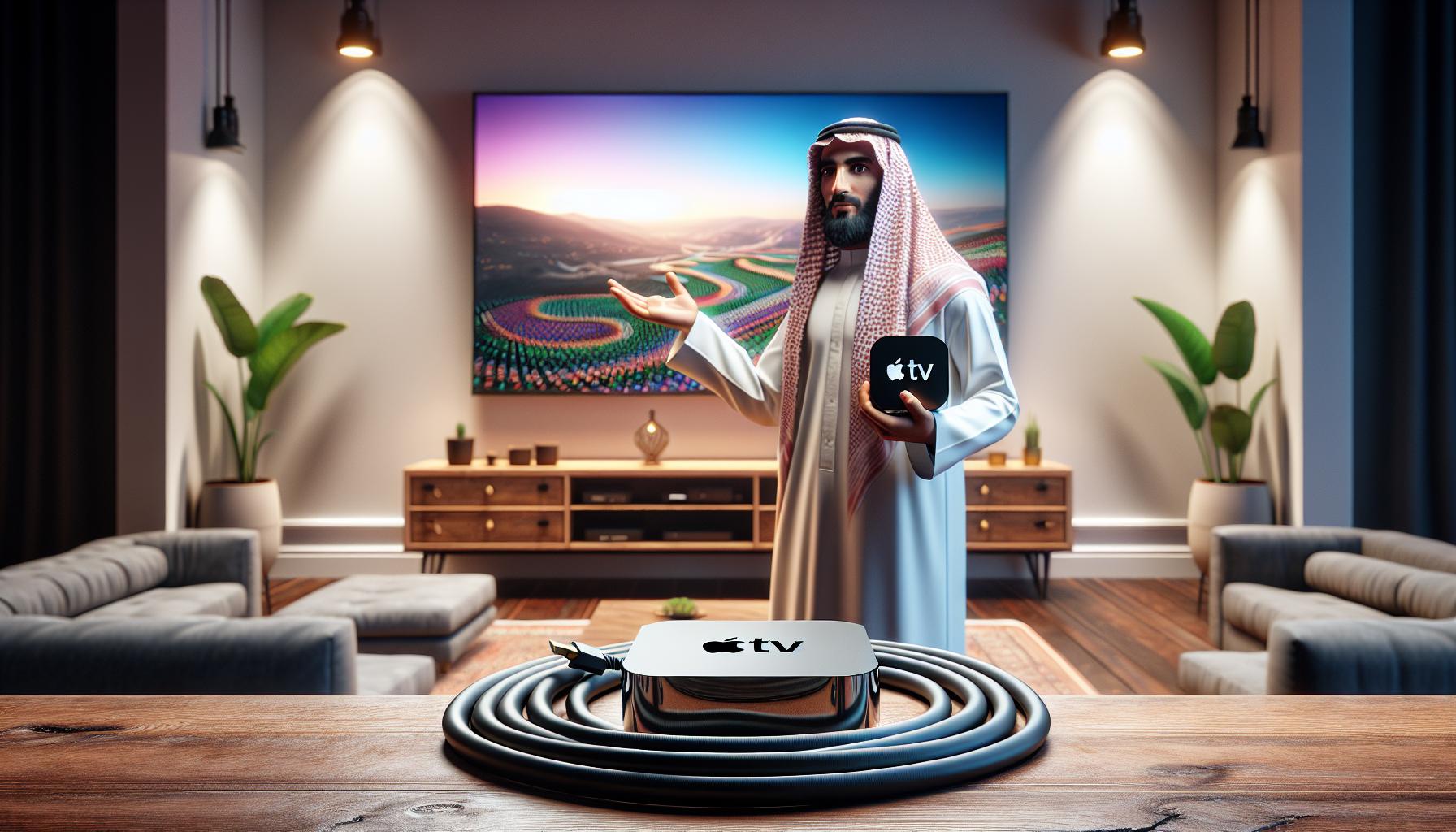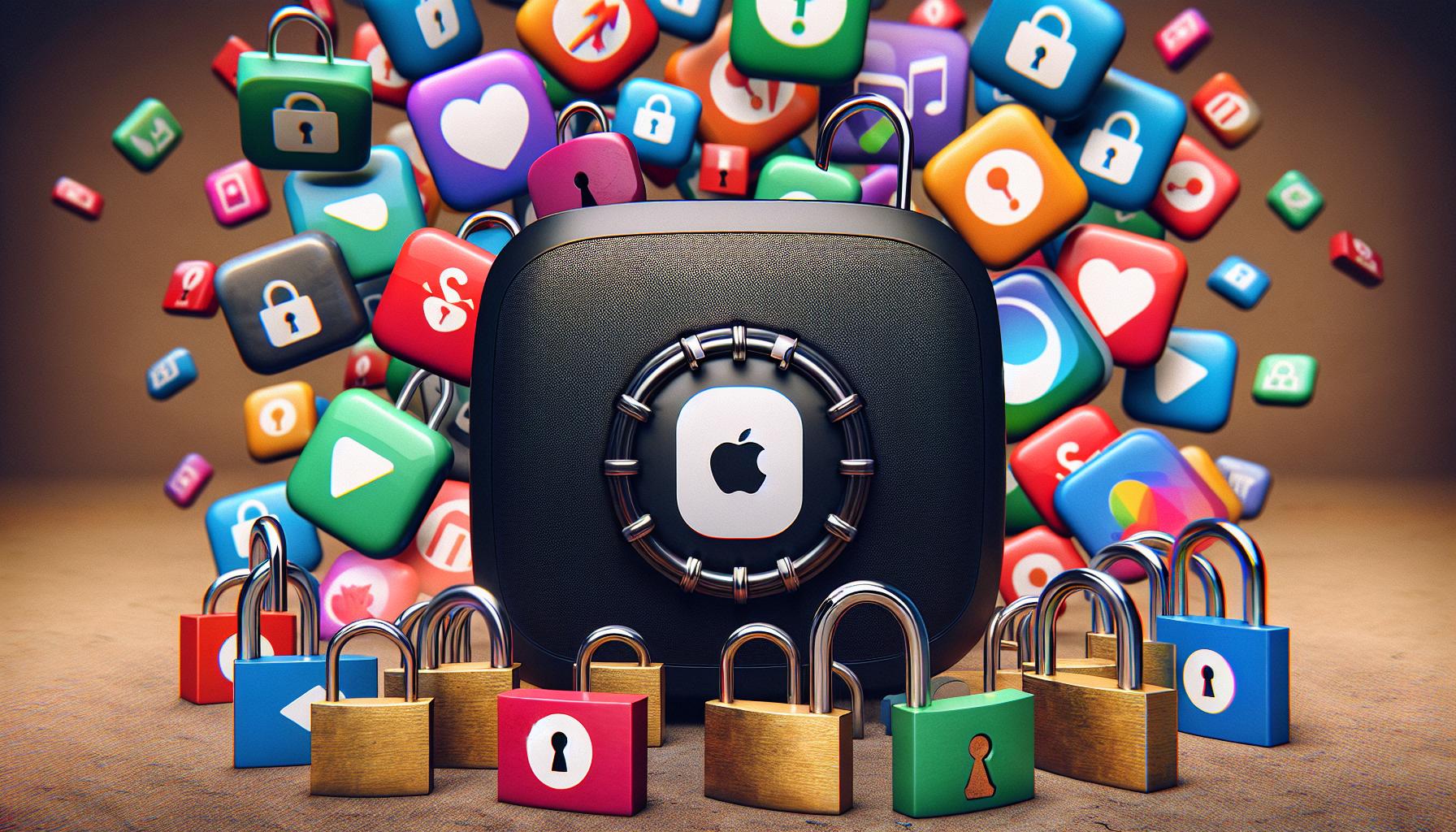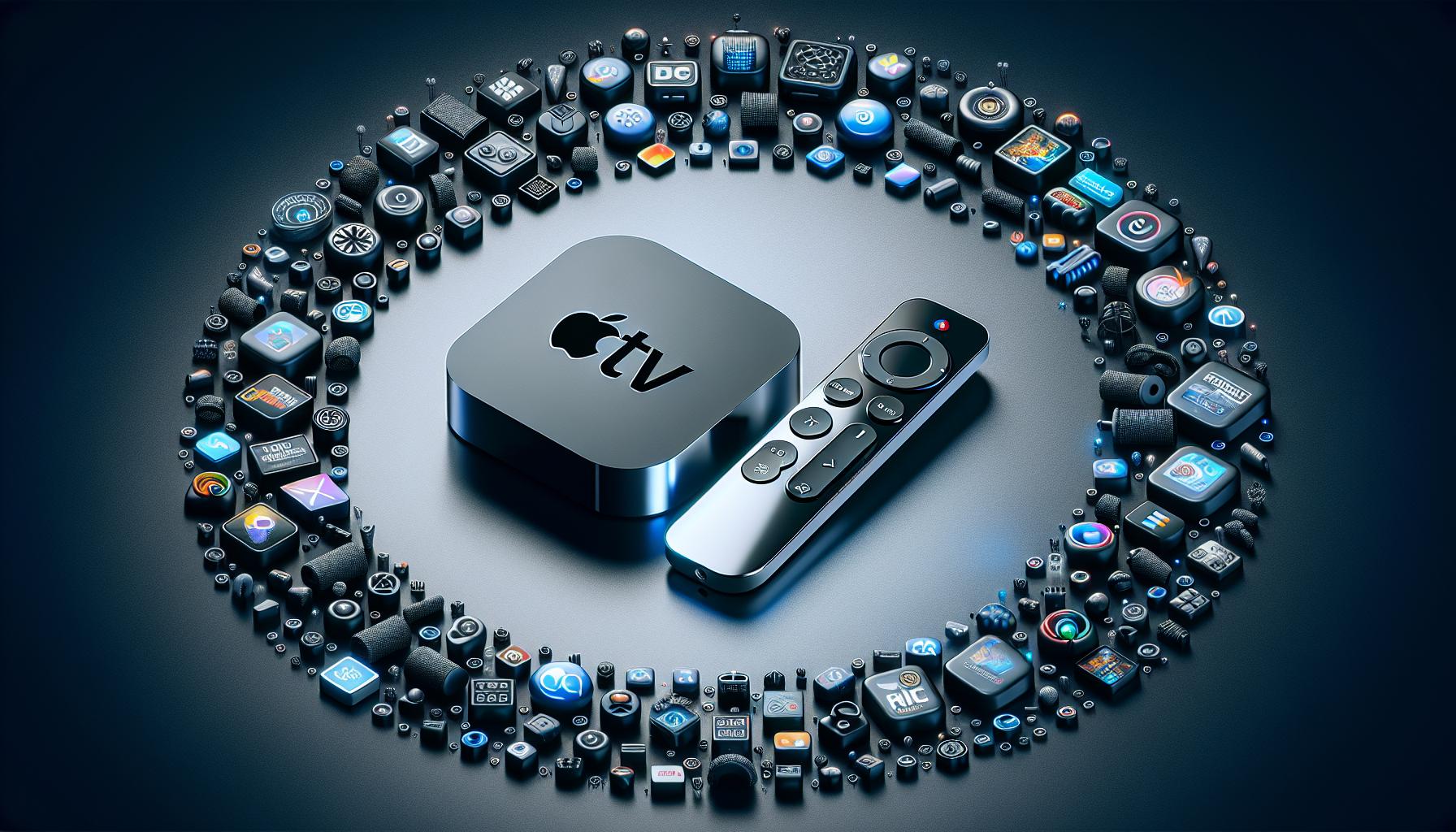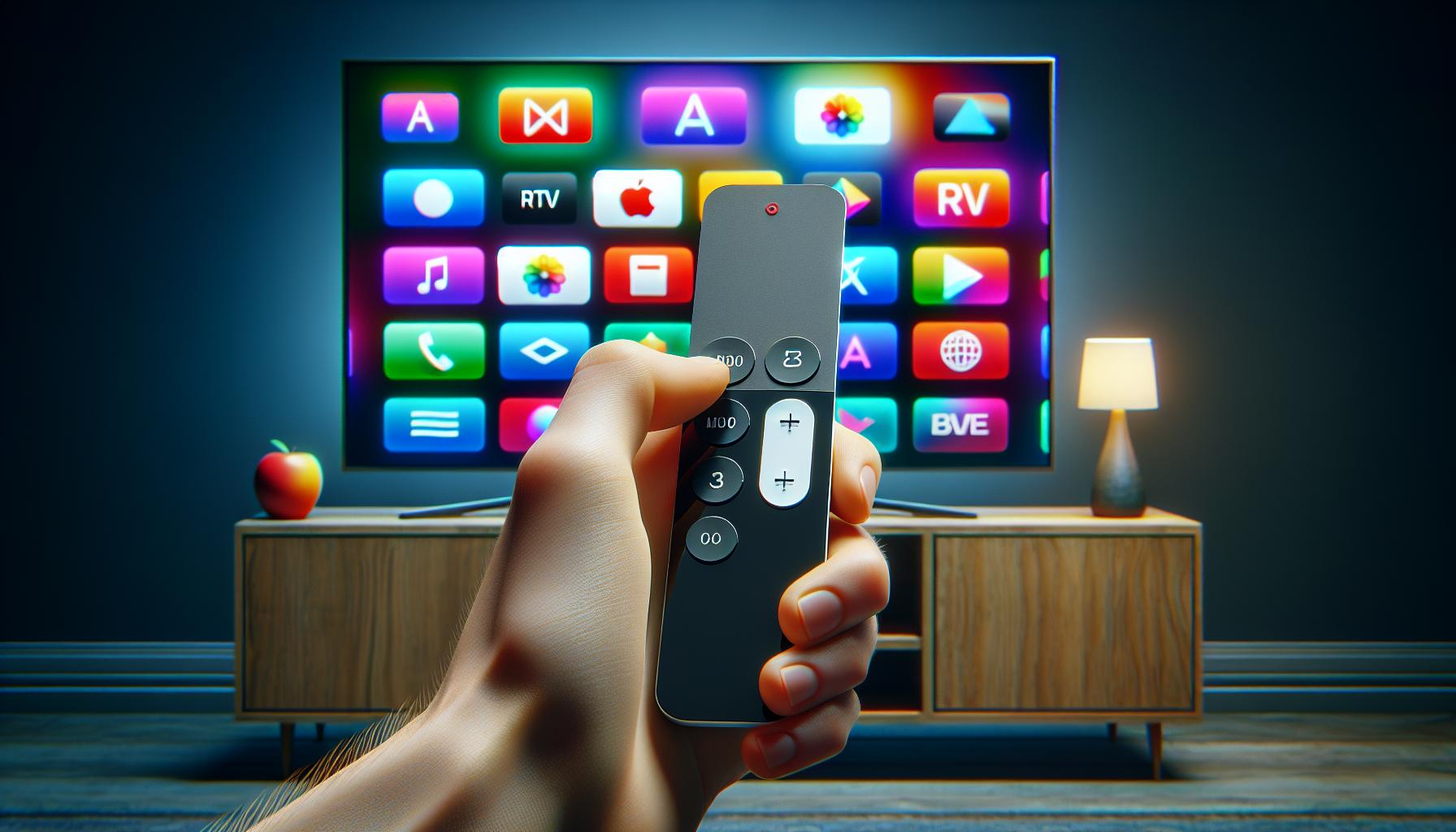Ever wondered how to cast Apple TV to your TV? Well, you're not alone. It's a common question for many Apple TV users who want to enjoy their favorite content on a bigger screen.
Casting Apple TV to your TV might sound complicated, but it's actually pretty straightforward. In the next few paragraphs, we'll walk you through the process step-by-step.
So, whether you're a tech newbie or a seasoned pro, we've got you covered. Let's dive in and get that Apple TV content streaming on your big screen in no time.
What is Apple TV?
Before delving into the step-by-step guide, it's vital to understand what Apple TV actually is. Apple TV is essentially a small box that connects to your television via an HDMI cable. It's an all-in-one hub for your entertainment needs, where you can stream favorite movies, play games, or access a plethora of apps and services.
Apple TV excels in its user-friendly interface and seamless integration with other Apple devices. With Siri-enabled voice search and a touch-sensitive remote, navigating through Apple TV becomes as intuitive as using your iPhone.
Even more noteworthy is Apple TV+'s quality exclusive content. The service launched in November 2019, offering a range of original and captivating shows and movies. Now, it's grown into a notable player in the competitive streaming landscape.
There are a few different versions of Apple TV to consider. The Apple TV HD is the standard version and it delivers 1080p resolutions. On the other hand, Apple TV 4K gives you ultra high-definition content, with HDR support for vibrant visuals.
| Apple TV Model | Resolution | HDR Support |
|---|---|---|
| Apple TV HD | 1080p | No |
| Apple TV 4K | Up to 2160p (4K) | Yes |
Now that you've developed a better understanding of what Apple TV is and what it offers, the next essential part is learning how to cast it on your television for a bigger and improved viewing experience.
Benefits of casting Apple TV to your TV
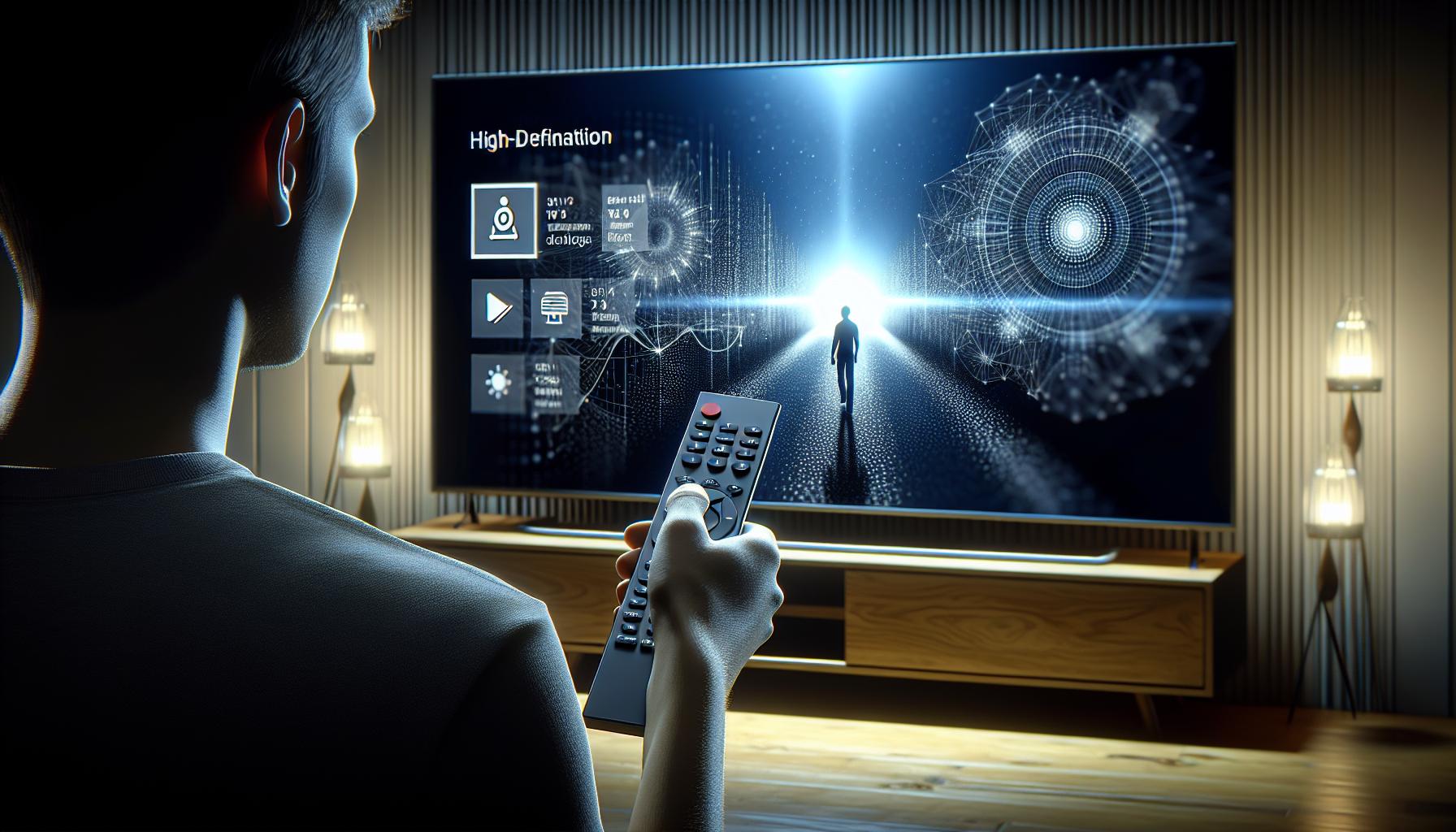
Casting your Apple TV to your television opens up a world of possibilities, transforming your TV into a hub for entertainment, learning, and connectivity. Siri's voice-activated search feature lets you find what you want without fumbling through complicated menus. Here are a few more benefits you'll enjoy when you cast Apple TV to your television.
Superior Resolution: Both Apple TV HD and Apple TV 4K support high resolution. Apple TV HD carries the capacity to display 1080p resolution, while Apple TV 4K can bump that up and showcase its outstanding 4K HDR capabilities. Your favorite shows and movies have never looked better.
Exclusive Content: Once you've cast Apple TV to your TV, you gain access to Apple's original content available exclusively on Apple TV+. From thrilling dramas to enlightening documentaries, there's something for everyone.
Universal iTunes Access: Your airing Apple TV on your TV grants you unrestricted access to your iTunes library. You can enjoy music, movies, and TV shows that you have purchased from iTunes, right on your big screen.
HomeKit Integration: Connect and control smart home devices with your Apple TV. It's not just a TV anymore; it's the command center for your smart home.
Consider these benefits when deciding to cast your Apple TV to your television. You're not just enhancing your viewing experience; you're expanding the horizons of what your television can do.
Earlier in the article, you learned what Apple TV is, what makes its interface user-friendly, and the exclusive content it offers. You also covered the different versions of Apple TV available - Apple TV HD and Apple TV 4K - and the different resolutions they support. Let's now delve into the step-by-step guide on how to cast Apple TV onto your television.
Requirements for casting Apple TV to your TV
To optimize your viewing experience with Apple TV, there are some things you'll need to consider and prepare. We'll identify and provide details on these prerequisites.
Firstly, you'll need to have an Apple TV device. The currently available versions are Apple TV HD and Apple TV 4K. These models allow for high definition and ultra-high-definition streaming, respectively.
Secondly, your TV set should be HDMI-compatible. The Apple TV uses an HDMI cable for connecting with television sets. HDMI ensures high-quality audio and visual signals for a better viewing experience.
Thirdly, possession of a stable Internet connection is crucial. The Apple TV device needs a good WIFI signal to work effectively since all the content comes via the internet. If your connection isn't strong enough, you may experience lagging or buffering, that can interrupt your viewing.
As for the selecting the right HDMI cable, if you have the Apple TV HD, an HDMI cable that supports a resolution of 1080p is suitable. As for the Apple TV 4K, an HDMI cable that supports 4K is required. These cables ensure that your TV can fully utilize the high-definition capabilities of your Apple TV device.
- Apple TV device: Apple TV HD or Apple TV 4K
- HDMI-compatible television
- Stable Internet connection
- Right HDMI cable
Using the right tools and meeting these requirements will pave the way for a seamless and enjoyable viewing experience. After setting up these requirements, the next step would focus on how to actually cast Apple TV onto your TV. The following section will shed light on this process.
Step-by-step guide to casting Apple TV to your TV
Alright, we've covered why it's a great idea to cast Apple TV to your television—superior resolution, exclusive content, universal iTunes access, and of course, homekit integration. Not to mention the user-friendly interface of Apple TV and its different versions—both Apple TV HD and Apple TV 4K. We've also covered the requirements—you'll need an Apple TV device, an HDMI-compatible television, a stable internet connection, and the right HDMI cable.
Now we'll take you through the process to get to that seamless viewing experience. The exact process might vary slightly based on your specific Apple TV model, but this guide should point you in the right direction.
Start by connecting your Apple TV to your television. Use the HDMI cable to plug the Apple TV into your television. Make sure your TV is set to the correct HDMI channel.
Next, grab your Apple TV remote. You're about to navigate the simple and vibrant Apple interface.
From your Apple TV main screen, navigate to the "Settings" option. Here, you'll find several options for adjusting Apple TV to suit your preferences, but you'll specifically want the "AirPlay" option.
Select the "AirPlay" setting. If it's not currently turned on, now's the time to do it. This allows other devices to play their content on your TV using Apple TV.
When AirPlay is enabled, have your Apple device like an iPhone, iPad, or even a Mac; ready. Open the screen you want to cast; it could be a film, a video, a presentation, or even your entire screen. Once it's up, find the small square icon with a triangle at the bottom—it's our friend, the AirPlay icon.
In the list of possible devices, choose your Apple TV. The screen being displayed on your device should now be mirrored on your TV through the Apple TV.
Above is the basic overview of streaming content from your device to your TV using Apple TV. For more in-depth guides, head over to Apple's official support pages—it's always good to keep sharpening your Apple game.
Troubleshooting common issues while casting Apple TV to your TV
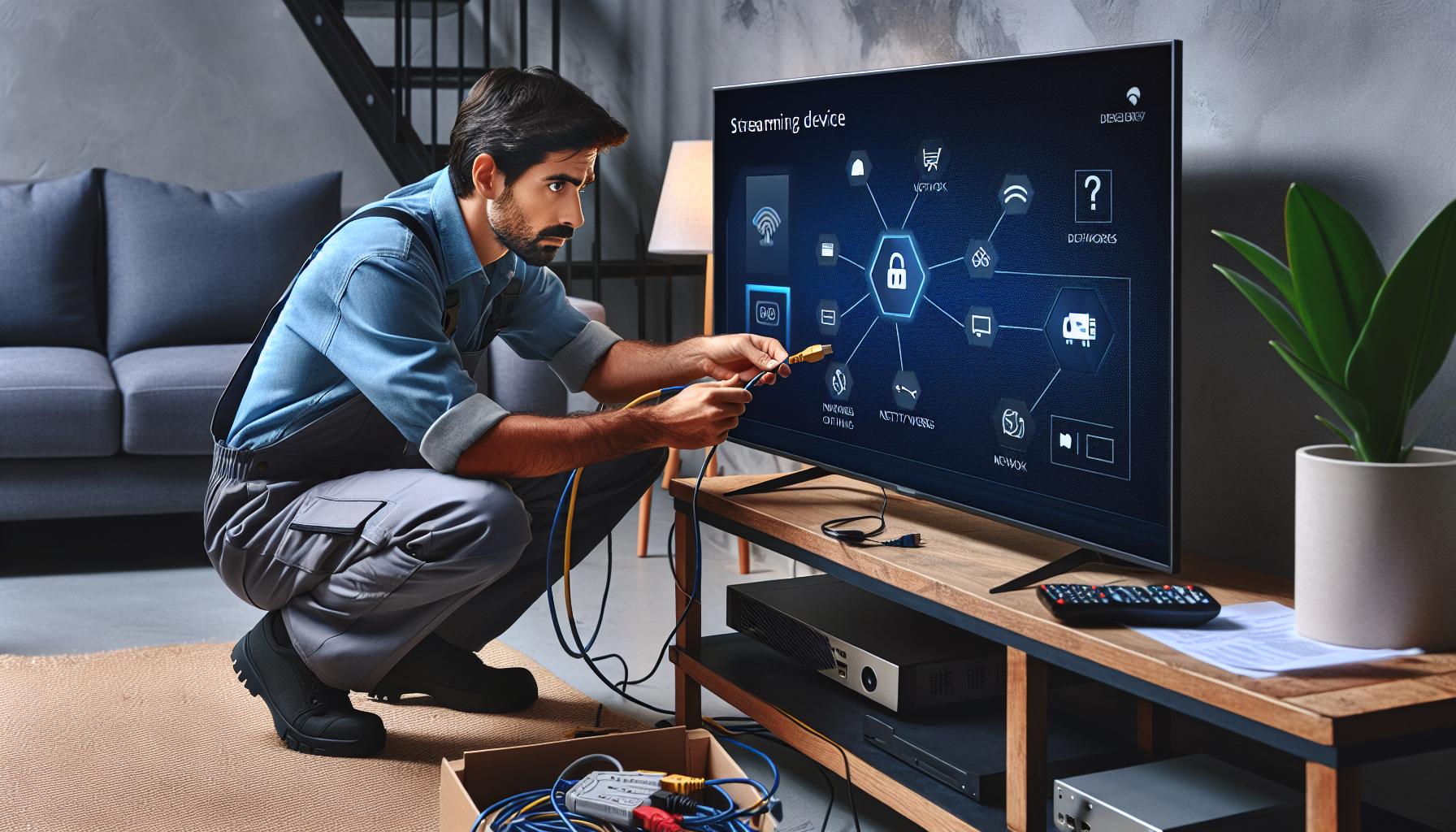
While the process of casting Apple TV to your television is generally straightforward, you might encounter some common issues. But don't worry - most of these problems can be fixed with a bit of troubleshooting.
No Picture or Sound
If you can't see any picture or hear any sound after connecting your Apple TV, try these solutions:
- Check your HDMI cable connections.
- Try a different HDMI port on your television.
- Restart your Apple TV and your television.
Poor Quality Streaming
If you're experiencing lagging, buffering, or low-quality video, it might be due to a slow or unstable internet connection. Here's what you can do to solve this issue:
- Check the speed of your internet connection. For HD streaming, you need at least 5 Mbps, but for 4k streaming, 25 Mbps is recommended.
- Move your Apple TV closer to your WiFi router, or try using a wired Ethernet connection.
AirPlay Not Working
Having trouble with AirPlay? You're not alone. This is a common issue. Here are some tricks you can try:
- Make sure your Apple TV and the device you're casting from are on the same WiFi network.
While these steps should help troubleshoot your issues, remember that ongoing problems might be due to hardware faults or software glitches. Keep in mind, Apple provides extensive online resources and customer support. So, don't hesitate to reach out to them if you continue experiencing difficulty with your Apple TV.
Conclusion
So that's how you cast Apple TV to your TV. With the right tools and a bit of know-how, it's a piece of cake. Remember, you'll need an Apple TV device, an HDMI-compatible TV, a stable internet connection, and the correct HDMI cable. Don't be discouraged if you run into issues like no picture, poor streaming quality, or AirPlay glitches. There are solutions for these common problems, and Apple's official support pages are always there to help. If you're still having trouble, don't hesitate to reach out to Apple directly. Now, you're all set to enjoy your favorite shows and movies on the big screen. Happy streaming!
What is needed to cast Apple TV to my TV?
To cast Apple TV to your television, you need an Apple TV device, an HDMI-compatible TV, a stable internet connection, and the right HDMI cable.
What do I do if there's no picture or sound when casting Apple TV?
There could be multiple reasons for this issue. You can try rebooting Apple TV or check if the HDMI connections between the TV and the Apple TV device are secure. Refer to Apple's official support pages for more detailed troubleshooting.
What is the solution for poor quality streaming while casting Apple TV?
To rectify poor streaming quality, ensure you have a stable and fast internet connection. If the problem persists, trying rebooting your devices or check Apple's official support pages for more advice.
What if AirPlay isn't working on my Apple TV?
An inability to access AirPlay can be extremely frustrating. Firstly, ensure all devices are connected to the same Wi-Fi network. And secondly, make sure your devices meet the AirPlay compatibility requirements. If the issue persists, visit Apple's official support pages.
What is the primary benefit of casting Apple TV to my TV?
By casting Apple TV to your TV, you can access a wide variety of exclusive content in an easy and convenient manner. Streaming Apple TV grants you access to countless movies, TV shows, and a host of exclusive Apple Originals.
